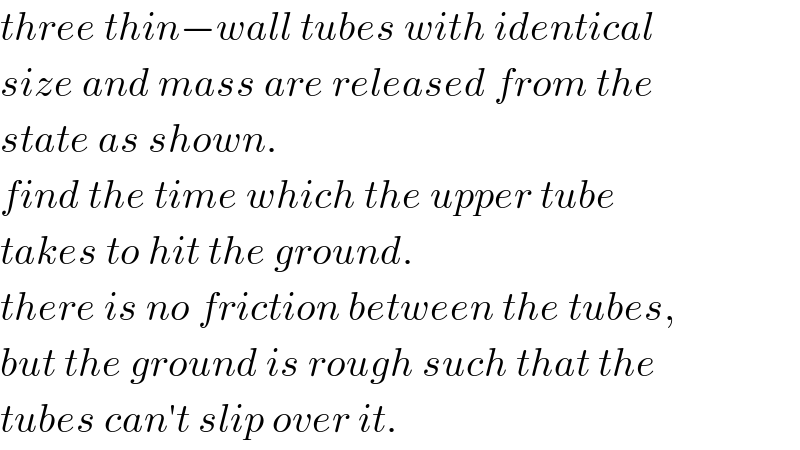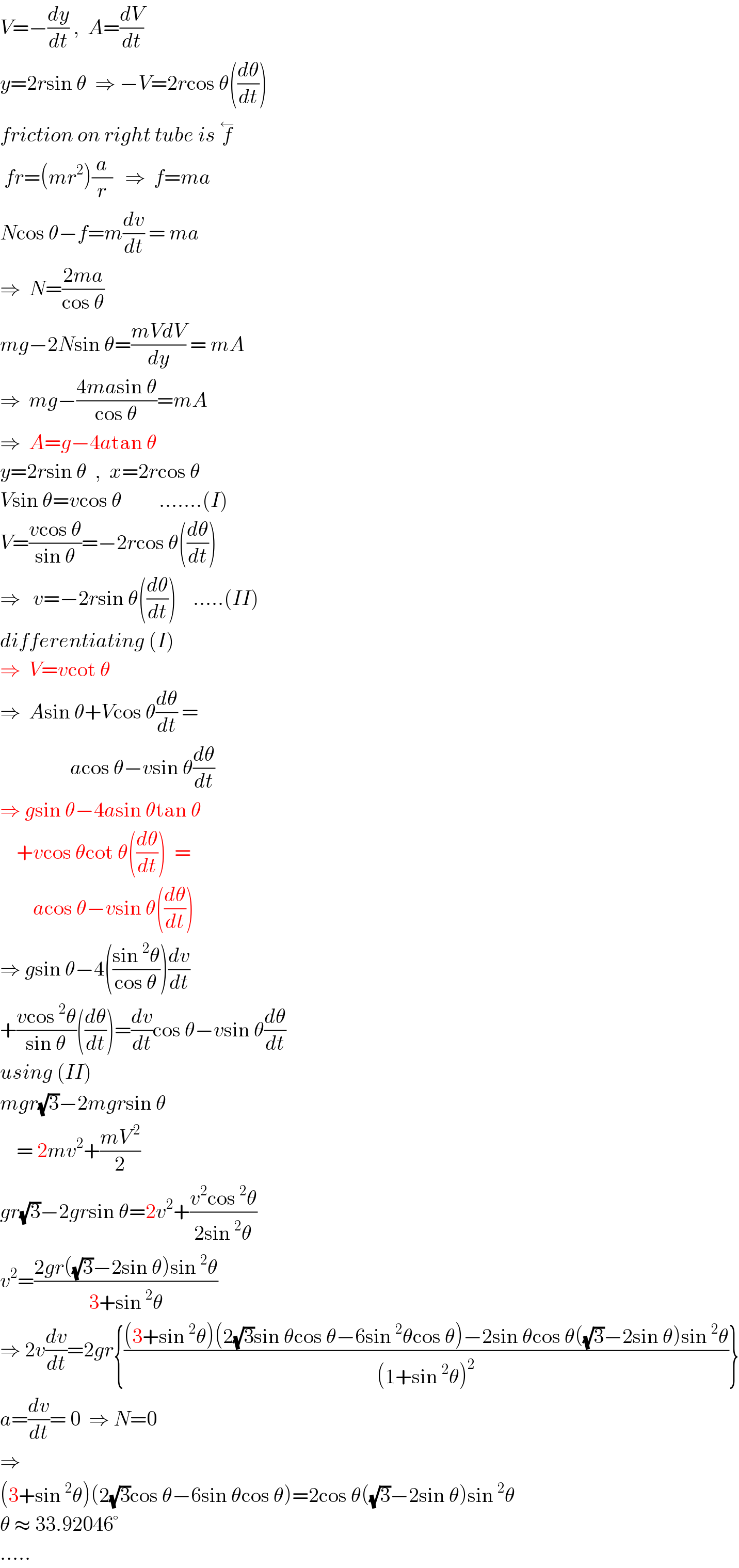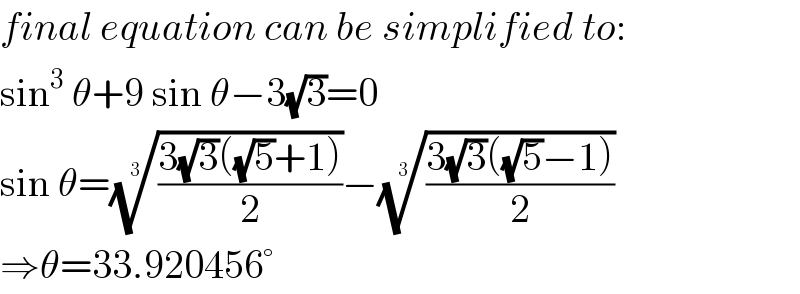
Question and Answers Forum
Question Number 80648 by mr W last updated on 05/Feb/20

Commented by mr W last updated on 05/Feb/20

Commented by ajfour last updated on 05/Feb/20

Commented by ajfour last updated on 05/Feb/20

Commented by mr W last updated on 05/Feb/20

Commented by mr W last updated on 06/Feb/20

Commented by ajfour last updated on 06/Feb/20

Commented by ajfour last updated on 06/Feb/20

Commented by mr W last updated on 06/Feb/20

Commented by zainal tanjung last updated on 06/Feb/20

